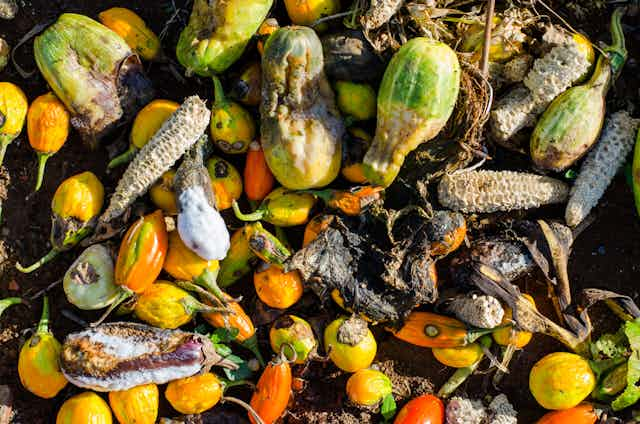On September 25 world leaders will meet in New York to formalise the new Sustainable Development Goals. These 17 goals will guide efforts to reduce poverty and increase well-being, without destroying the Earth. The Conversation is looking at how we got here, and how far we have to go.
Unlike the Millennium Development Goals (or MDGs) that applied only to developing countries, the Sustainable Development Goals (or SDGs) will apply to all countries, including Australia. The new goals will have a key goal of eradicating extreme poverty, but they also have a much wider agenda.
While the MDGs achieved considerable success in reducing poverty in developing countries, key challenges of climate change, environmental degradation, rising inequality and conflict present a significant risk to the well-being of all of us, including Australians. These are truly global challenges that require global solutions involving all countries.
The SDGs offer the opportunity for a “win-win” for Australia: by promoting more sustainable development we can improve the quality of life and opportunity here in Australia while also promoting prosperity in the many developing countries in our region. This will be vital for our economic future and security.
Sustainable development in a developed country
The SDGs are relevant to developed countries like Australia in two ways.
First, they represent goals and targets that can make Australia itself more prosperous, fair and sustainable. Examples include improving gender equality and reducing non-communicable diseases.
Second, they encourage actions by Australia that will contribute to global sustainable development. Examples here are more sustainable consumption and production, reduced carbon emissions, and support for overseas development.
Many of the targets are aimed mainly at developing countries and are of limited relevance to Australia. Australia will have no problem meeting the SDG targets for extreme poverty, hunger, and maternal and child mortality. Similarly, many of the health, education and economic targets are focused on the needs of developing countries.
However, Australia faces major challenges in meeting the SDGs relating to sustainable energy (goal 7), sustainable consumption and production (goal 12), and climate change (goal 13).
Among other targets, these call for a doubling in the rate of improvement in energy efficiency (goal 7.3), implementing a 10-year framework on sustainable consumption and production (goal 12.1), and halving food waste by 2030 (goal 12.3). Australian households waste about 15% of the food they purchase per year – that’s an estimated 361 kg of food waste per person per year, so there is plenty of scope for improvement.
We still have a way to go to meet the goals and targets for inequality within Australia. The gender-equality goal includes a target of ensuring that women have “full and effective participation and equal opportunities for leadership at all levels of political and economic decision-making” (goal 5.5). This has proved elusive in Australia.
And the SDGs seek to raise incomes of the bottom 40% of the population faster than the rest – the opposite of what has been happening in Australia.
Perhaps one of the most significant applications of the SDGs to Australia will be in helping reduce the gap between Indigenous and non-Indigenous Australians. A core principle underpinning the SDGs is that “no one is left behind”: the goals and targets are to be met for all income and social groups, particularly disadvantaged groups.
Indigenous Australians have been well and truly left behind on health, education and employment indicators. The SDGs provide an opportunity to redress this.
Which goals are most important in Australia?
Over the past three years, Monash Sustainability Institute and the UN Sustainable Development Solutions Network have held a series of workshops with business, government, non-government organisations and academia to identify which goals and targets are most important to Australia.
As one of the world’s most urbanised countries, goal 11, to make our cities safe, resilient and sustainable, is clearly important. As a dry continent with an important agricultural sector, ensuring sustainable water management in cities and rural areas is critical (goal 6).
And with some of the world’s highest carbon emissions per person, the goals of sustainable modern energy (goal 7), sustainable consumption and production (goal 12) and action to combat climate change (goal 13) are clearly relevant. Some of the social targets such as reducing inequality, strengthening prevention of substance abuse and increasing access to early childhood development also rated highly.
However, perhaps the most important recommendation of the workshops was the need to look for linkages between the goals and to recognise the synergies and trade-offs between them.
For example, the use of first-generation biofuels might reduce carbon emissions and provide energy security but could have a negative effect on agriculture and food prices. On the other hand, increasing water use efficiency could reduce costs, improve water security and be an essential adaptation measure to climate change.
The SDGs and targets are meant to take into account different national realities and levels of development. Each government is able to set its own national targets guided by the global level of ambition but taking into account national circumstances. Potential Australia-specific targets could be for non-communicable diseases, technical and vocational skills, gender equality, water efficiency, affordable housing and sustainable cities. The SDGs and targets could be incorporated into national planning processes but also into those of the states and local government.
Perhaps most importantly, Australia should look for targets that incorporate the three dimensions of sustainable development: economic, social and environmental. It is in this way that we will maximise well-being for all rather than continue the unsustainable path of trading off social and environmental needs for economic growth.

